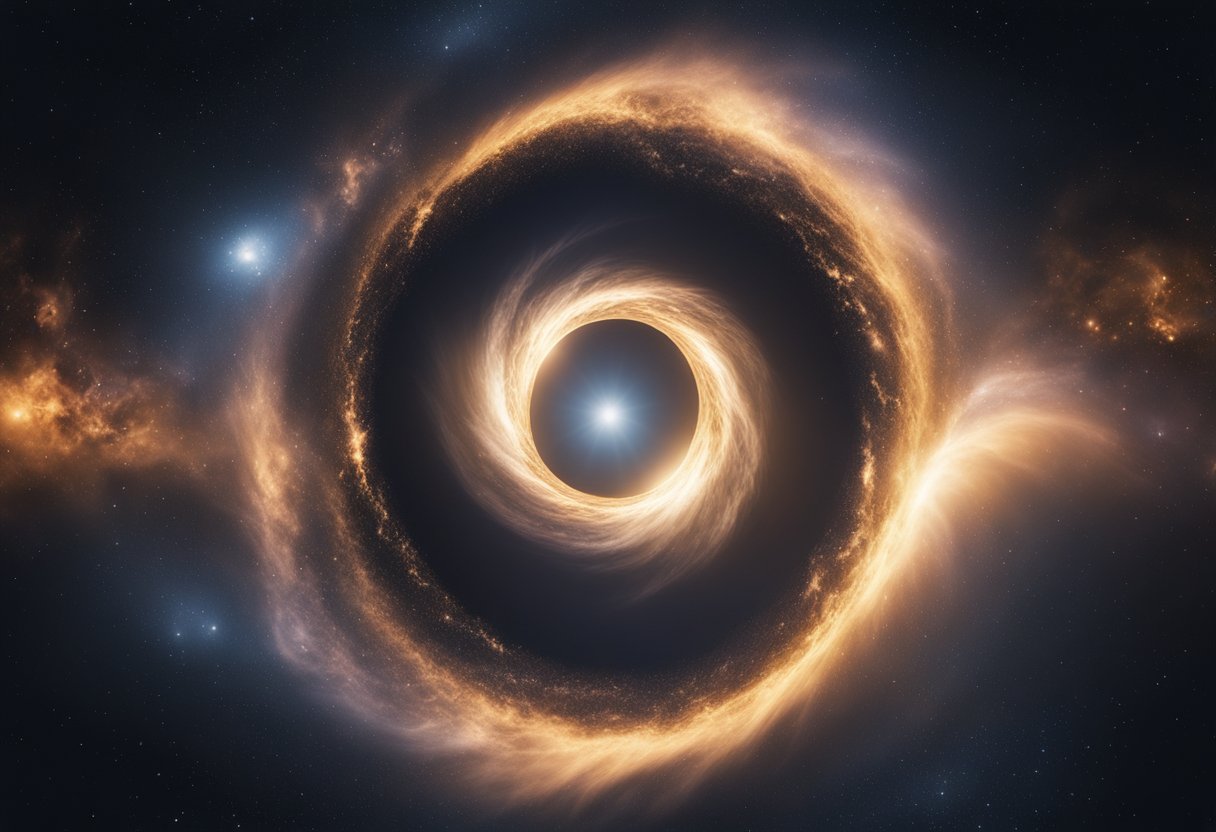
Black Hole Observations – Black holes are among the most mysterious and intriguing objects in the universe. They represent a point in space where gravity is so strong that nothing, not even light, can escape from it. The edge of a black hole is called the event horizon, a boundary beyond which everything is consumed and shrouded in darkness. Understanding black holes requires a deep knowledge of general relativity, the theory pioneered by Albert Einstein, which governs the behaviour of objects in extreme gravitational environments.
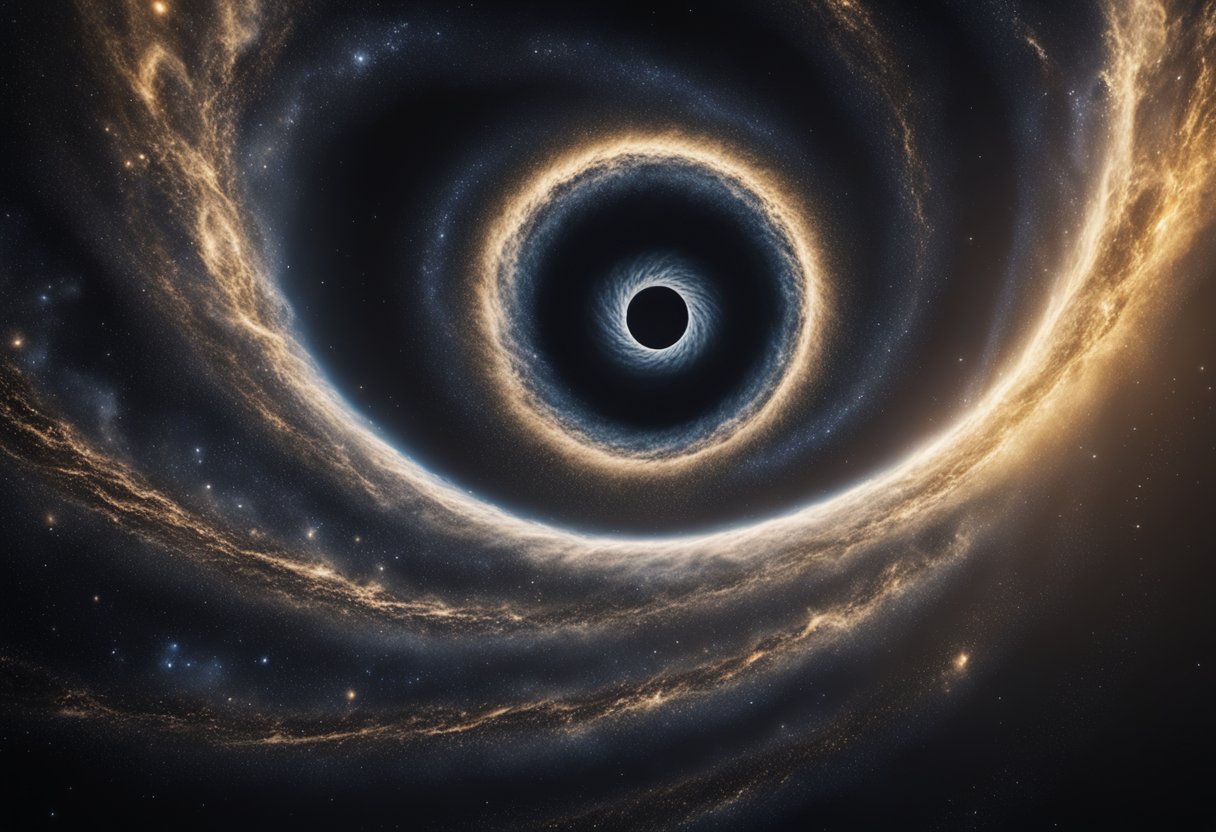
The quest to observe and understand these enigmatic phenomena is one of the most exhilarating challenges in modern astronomy. With advancements in technology, astronomers are now able to detect black holes through various indirect methods, such as observing the motion of stars orbiting an invisible companion or the emission of X-rays from matter as it spirals into a black hole’s inescapable pull. The observations are not just limited to our Milky Way, but extend to galaxies millions of light-years away, shedding light on the diverse types and sizes of black holes that pepper our cosmos.
We’ll explore the intricate process of how black holes come into being and the defining characteristics that make them some of the most captivating objects in the cosmos.
Collapse: When massive stars exhaust their thermonuclear fuel, their core can no longer support the weight from the outer layers. The resultant imbalance in gravity forces the core to collapse, causing a supernova explosion. If the remaining core has more than about three times the mass of the Sun, it collapses into a black hole.
Event Horizons: The boundary around a black hole from which nothing can escape, not even light, is known as the event horizon. This defines the visible ‘edge’ of a black hole.
Singularities: At the very centre lies the singularity, a point of infinite density where space-time curves infinitely and the known laws of physics cease to function.
As we explore the cosmos, we categorise black holes based on their mass. Each type has distinct characteristics and plays different roles in the cosmic landscape.
Stellar black holes form when massive stars, much larger than our Sun, exhaust their nuclear fuel and collapse under their own gravity. These typically have masses up to 20 times that of the Sun. We observe them often within our own Milky Way galaxy, usually through effects like the emission of X-rays as they accrete matter.
At the cores of most galaxies, including our own, lie supermassive black holes. These giants have masses equivalent to millions or even billions of suns. They influence galaxy dynamics significantly and are often observed via the high-energy phenomena they induce in their surroundings.
In our quest to understand the cosmos, we have developed methods to observe the seemingly unobservable: black holes. These astronomical phenomena do not emit light directly, but we can infer their existence by their profound effects on nearby matter and the way they interact with various forms of electromagnetic radiation.
We can observe the presence of black holes by their gravitational impact on nearby stars and gas clouds. As matter falls into a black hole’s strong gravitational pull, it heats up and emits X-rays. These X-ray emissions are often our primary method for detecting stellar-mass black holes.
Our ability to gather evidence of black holes has significantly advanced with the development of high-powered telescopes. The Event Horizon Telescope (EHT), an international collaboration, has been pivotal in capturing images of black holes. By observing the silhouette of a black hole against the backdrop of hot gas in the accretion disc, we can directly observe the black hole’s event horizon.
In exploring the vast enigma of black holes, our observational endeavours hinge on sophisticated instrumentation across various wavelengths. Telescopes on Earth and in space unite to paint a more comprehensive picture of these cosmic phenomena.
Event Horizon Telescope (EHT): A key player in radio astronomy is the EHT, a global network of radio telescopes that famously captured the first image of a black hole’s event horizon. It unifies facilities worldwide to act as one Earth-sized telescope, providing the angular resolution necessary for such detailed observations.
Hubble Space Telescope: For over three decades, Hubble has been broadening our understanding of the universe. Despite not being designed to observe black holes directly, its high-resolution imaging in visible and ultraviolet light reveals the effects of black holes on surrounding matter.
James Webb Space Telescope (JWST): As Hubble’s successor, JWST will explore the universe in the infrared spectrum, potentially uncovering the growth of early black holes.
Chandra X-ray Observatory: This NASA telescope specialises in detecting X-ray emissions from hot regions of the universe, such as those around black holes. It offers a distinctive insight into the high-energy processes of these regions.
XMM-Newton: ESA’s X-ray Multi-Mirror observatory also contributes significantly to our understanding of black hole environments through X-ray observations.
By deploying this array of advanced telescopes and observatories, we continue to enhance our understanding of space’s deepest enigmas. Our efforts span from the analysis of gravitational effects, such as those visible to the Hubble Space Telescope, to the high-energy phenomena captured by Chandra and XMM-Newton, each instrumental in piecing together the puzzle of black hole observation.
In the field of astronomy, certain breakthroughs have thoroughly reshaped our understanding of the cosmos. Specifically, observations related to black holes have offered profound insights into these enigmatic phenomena.
Messier 87, or M87, houses a supermassive black hole that has been the subject of intense study. In 2019, scientists captured its shadow against the backdrop of bright accretion disk emissions, providing the first-ever image of a black hole. This groundbreaking achievement was made possible by the Event Horizon Telescope collaboration, a planet-scale array of eight ground-based radio telescopes forged through international cooperation.
Closer to home, in the milky way, lies Sagittarius A* (Sgr A*), an intriguing radio source located at the galactic center. Sgr A* is believed to be a supermassive black hole and has been scrutinised by astronomers for decades. Sgr A*’s existence helps us understand the dynamic processes at the heart of our galaxy, including those shaping the orbits of nearby stars.
Black holes are not a recent discovery; their existence was suggested as far back as the 18th century and they were later predicted by Einstein’s theory of relativity. Early X-ray observations in the 1970s identified Cygnus X-1 as a strong black hole candidate, kick-starting our quest to witness these invisible yet colossal objects.
These subsections make it clear that our understanding of black holes has come a long way from theoretical concepts to tangible evidence. Observations of M87 and Sgr A* prove that our galaxy and others harbour these extraordinary entities, which were once relegated to the realm of science fiction. Through our ever-improving technologies and dedicated research, we are uncovering more about the role of black holes in the universe’s framework.
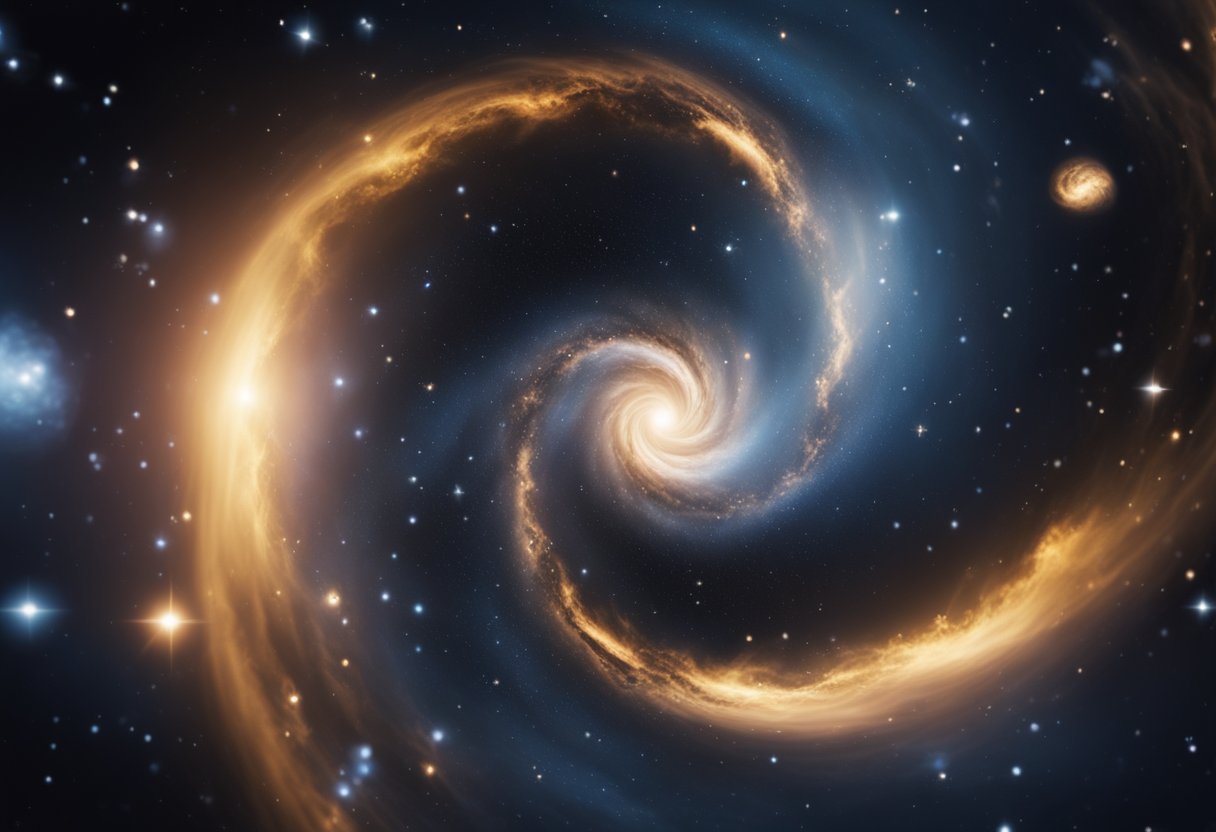
In this section, we discuss the underlying principles that have shaped our understanding of black holes, from the predictions made by Einstein’s General Relativity to the quantum considerations introduced by Hawking Radiation.
Einstein’s theory of General Relativity is fundamental in our grasp of black hole formation and structure. According to this theory, a black hole is a region in space where the gravitational pull is so strong that nothing, not even light, can escape from it. The boundary of this region is known as the event horizon. Inside the event horizon lies the singularity, a point where spacetime curvature becomes infinite and conventional physics breaks down.
Moving to the quantum scale, Hawking Radiation presents a phenomenon in which black holes are theorised to emit radiation due to quantum effects near the event horizon. This concept, introduced by Stephen Hawking, suggests that black holes are not entirely black but emit particles and can potentially evaporate over astronomical timescales. Hawking’s research provides a crucial bridge between general relativity and quantum theory.
In this section, we explore the significant figures in astrophysics, the theories that have paved the way for current understandings, and key publications that have chronicled these monumental discoveries.
The realm of astrophysics has been shaped by numerous pioneering researchers. One of the most noteworthy contributions was by the theoretical physicist Saul Teukolsky who, during his doctoral studies in the early 1970s, tackled problems around the theoretical understanding of black holes. This laid the groundwork for many subsequent studies that further unravelled the mysteries of these enigmatic phenomena.
General Relativity, put forth by Albert Einstein, contained the initial concept of what would later be known as black holes. This theory has been crucial in aiding astronomers in their quest to comprehend the workings of the universe. Researchers at institutions like the Center for Astrophysics | Harvard & Smithsonian (CfA) continue to utilise such theories to model and simulate black hole phenomena.
Publications like The Astrophysical Journal Letters, a preeminent resource for astronomers worldwide, are instrumental in disseminating new findings. Through comprehensive peer review, the journal ensures that only the most rigorous and impactful research is shared with the scientific community and astrophysics aficionados alike.
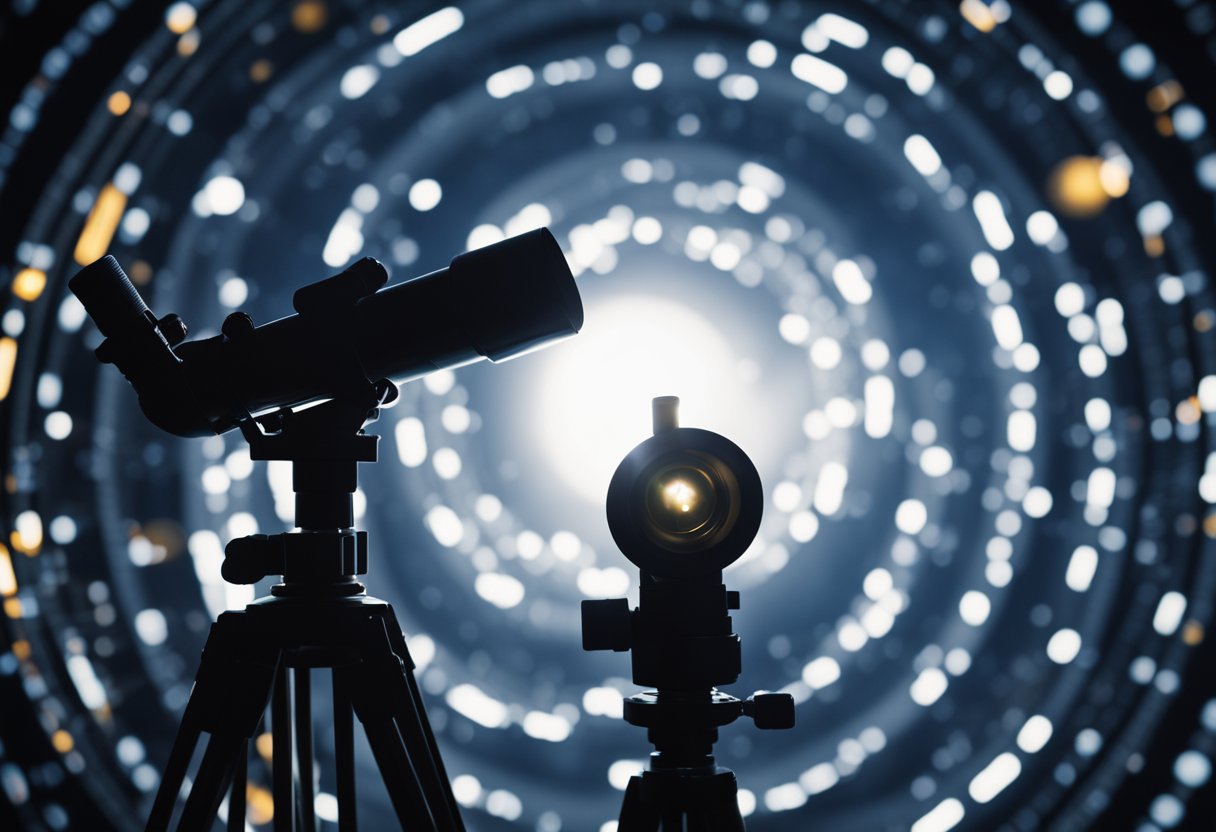
In our exploration of the cosmos, we recognise that black holes are fundamental forces shaping their surroundings. Their influence extends from the local environment of their host galaxies to the broader mechanics of cosmic evolution.
Black holes, particularly the supermassive variety residing in galactic centres, significantly influence their host galaxies. The material swirled in an accretion disk around a black hole emits intense radiation as it spirals inward, sometimes outshining the entire galaxy. Moreover, the energy and momentum carried away by jets ejected from the regions close to black holes can regulate star formation, alter the chemical composition of the interstellar medium, and even heat the surrounding gas in the host galaxy, preventing it from cooling and collapsing to form new stars.
The role of black holes in cosmic evolution is profound. Through their jets and radiation, they inject energy into the cosmos, influencing the state and evolution of the intergalactic medium. As they merge, they send out ripples in spacetime known as gravitational waves, providing insights into the fundamental workings of gravity. This activity forms a feedback mechanism, affecting the growth of galaxies and the larger-scale structure of the universal web across time.
In our pursuit to understand the cosmos, we utilise multi-wavelength astronomy as it allows us to observe and study various forms of radiation emanating from celestial objects like black holes. Through this approach, we gain a comprehensive picture of their behaviours and properties.
The electromagnetic spectrum encompasses all forms of electromagnetic radiation, from the longest radio waves to the shortest gamma rays. Each range of the spectrum reveals different properties of celestial phenomena. Gamma rays, for instance, originate from the most energetic events in the universe and are typically detected during violent occurrences such as supernovae or the active regions of black holes.
In the context of black holes, multi-wavelength observations across the spectrum are critical. They allow us to piece together information from each wavelength to form a fuller understanding of the black hole’s impact on its surrounding environment. Observations at radio wavelengths could reveal the structure of jets and outflows, while X-rays can inform us about the highly energetic processes occurring near the event horizon.
To elucidate the diverse energy emissions that arise from and around black holes, we classify them into categories such as X-ray binaries and cosmic rays. X-ray binaries are systems where one of the stars is a compact object like a black hole, which is accreting matter from its companion star. This process releases a substantial amount of energy predominantly in the form of X-rays.
Cosmic rays, on the other hand, are high-energy particles that travel through space and can emanate from areas around black holes, providing direct insights into energetic physical processes. By scrutinising the varied energy emissions across different wavelengths, we can identify the mechanisms at work within diverse cosmic environments and discern the fundamental physics governing such colossal entities.
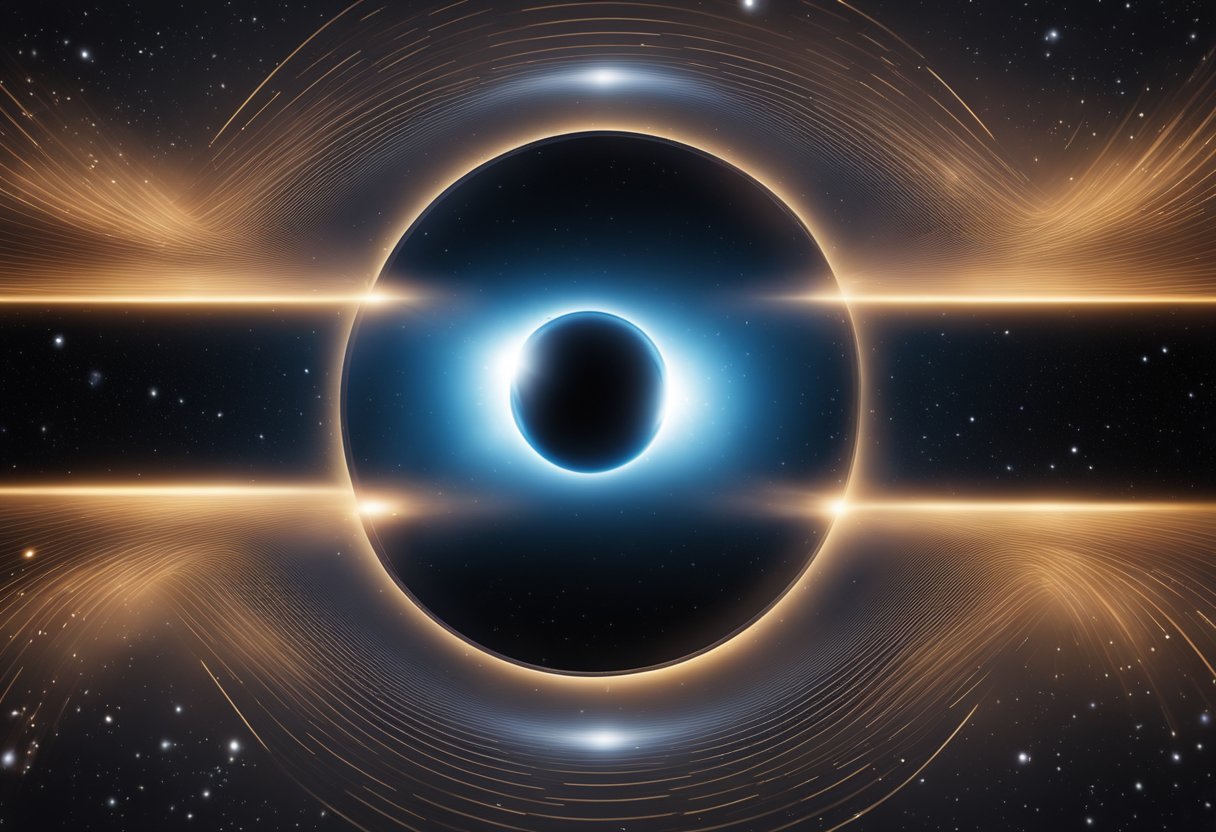
As we look towards the future, advancements in technology and cosmology are set to transform our understanding of black holes. We’re on the cusp of being able to observe these enigmatic phenomena in unprecedented detail, thanks to next-generation telescopes and sophisticated simulations.
Nuclear Spectroscopic Telescope Array (NuSTAR): Our ability to study black holes is expected to be significantly enhanced by the capabilities of NuSTAR. This telescope allows us to detect high-energy X-rays from black holes, providing valuable information about their structure and the high-energy processes occurring near them.
Fermi Gamma-ray Space Telescope: Alongside NuSTAR, the Fermi Gamma-ray Space Telescope will continue to play a pivotal role in our exploration of black holes. By observing gamma-ray emissions, we gain insights into the most extreme and energetic phenomena in the universe.
The Event Horizon Telescope (EHT): The EHT, which famously captured the first image of a black hole’s event horizon, will be further upgraded. These improvements are aimed at achieving even more detailed observations of black holes.
Simulations: We are improving our computer simulations, which give us a glimpse into the dynamics of black holes. Refined models are revealing how matter behaves in the extreme gravitational pull of these cosmic giants.
Theoretical Predictions: Our theoretical frameworks are constantly being updated as we synthesise observational data. The linkage between black holes and the Big Bang continues to be a significant focus of cosmological research. We’re striving to understand the role black holes played in shaping the universe immediately after the Big Bang.
In our journey to fully comprehend black holes, we’ve only just begun. We stand on the threshold of a new era breathless with anticipation for what the next chapter of astronomical discovery will hold.

In our exploration of black holes, we’re often asked about how they are observed, categorised, and depicted. Below we delve into some of the most pertinent questions surrounding these enigmatic phenomena.
We confirm the presence of a black hole by observing the effects it has on nearby matter and light. When a star ventures too close, we notice it being torn apart, a process known as spaghettification, or see its light dramatically redshifted due to the black hole’s immense gravity.
Black holes come primarily in three types: stellar, supermassive, and intermediate. Stellar black holes form from collapsing stars and can be around ten to twenty-four times the mass of the Sun, whereas supermassive black holes, like Sagittarius A* at the centre of our galaxy, contain millions or even billions of solar masses. Intermediate black holes are thought to fill the gap between these two classes.
Telescopes equipped with X-ray observatories, such as NASA’s Chandra X-ray Observatory, are crucial for black hole studies. These allow us to detect the high-energy regions around black holes and study their properties.
Recent black hole imagery, particularly from the Event Horizon Telescope, does not show the black hole itself, because no light can escape it. Rather, we see the “shadow” it casts on the glowing material around it, which looks like a dark central region surrounded by a bright ring of light.
Evidence for Sagittarius A* includes the movements of stars within the central region of the Milky Way, which orbit an invisible point with enormous gravitational pull. Furthermore, radio wave patterns observed from this region are consistent with what we would expect from a supermassive black hole.
The first photograph of a black hole was captured thanks to the collaborative effort of scientists in the Event Horizon Telescope Collaboration, including Dr Katie Bouman, who developed an algorithm pivotal for the image reconstruction process.